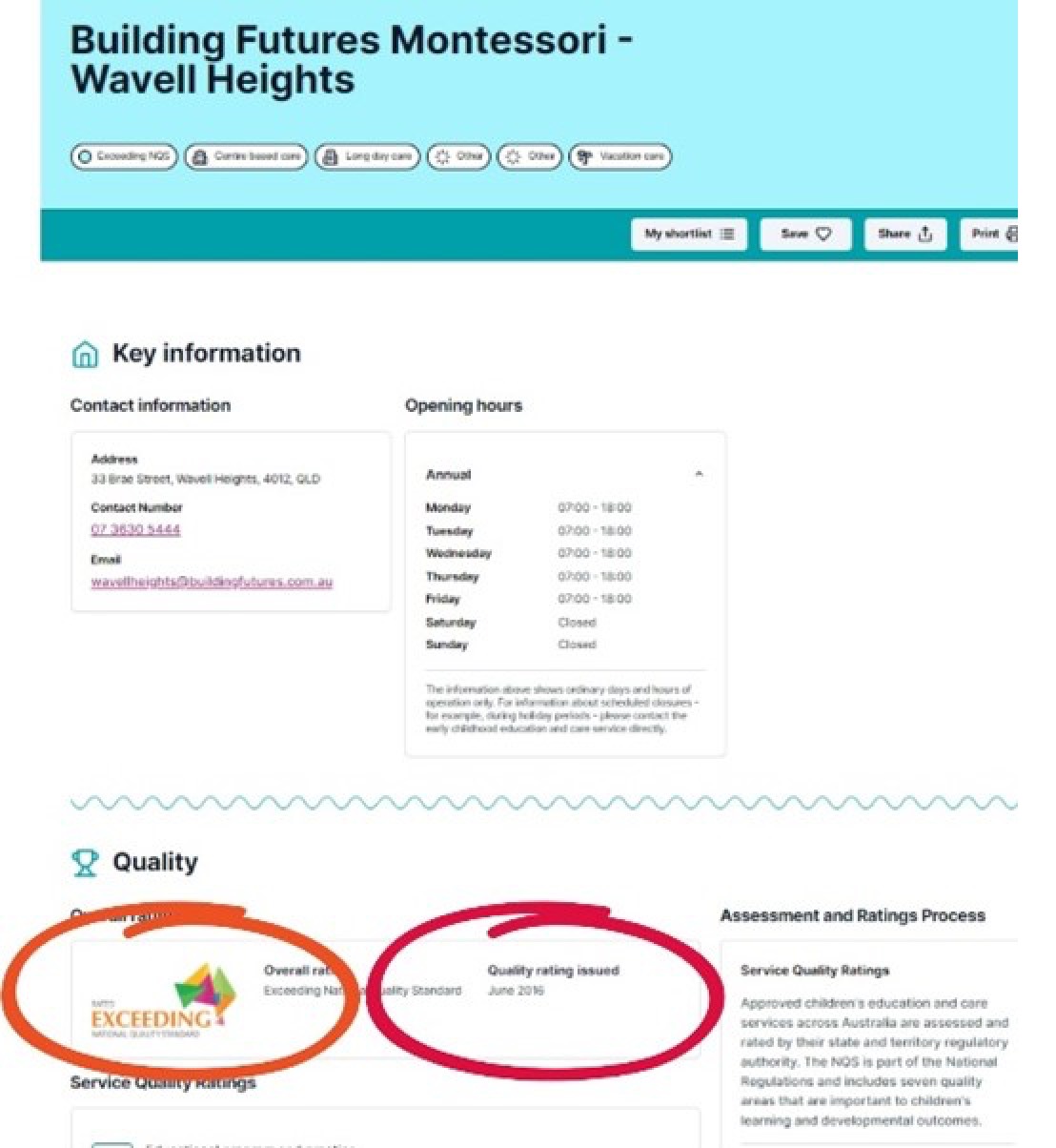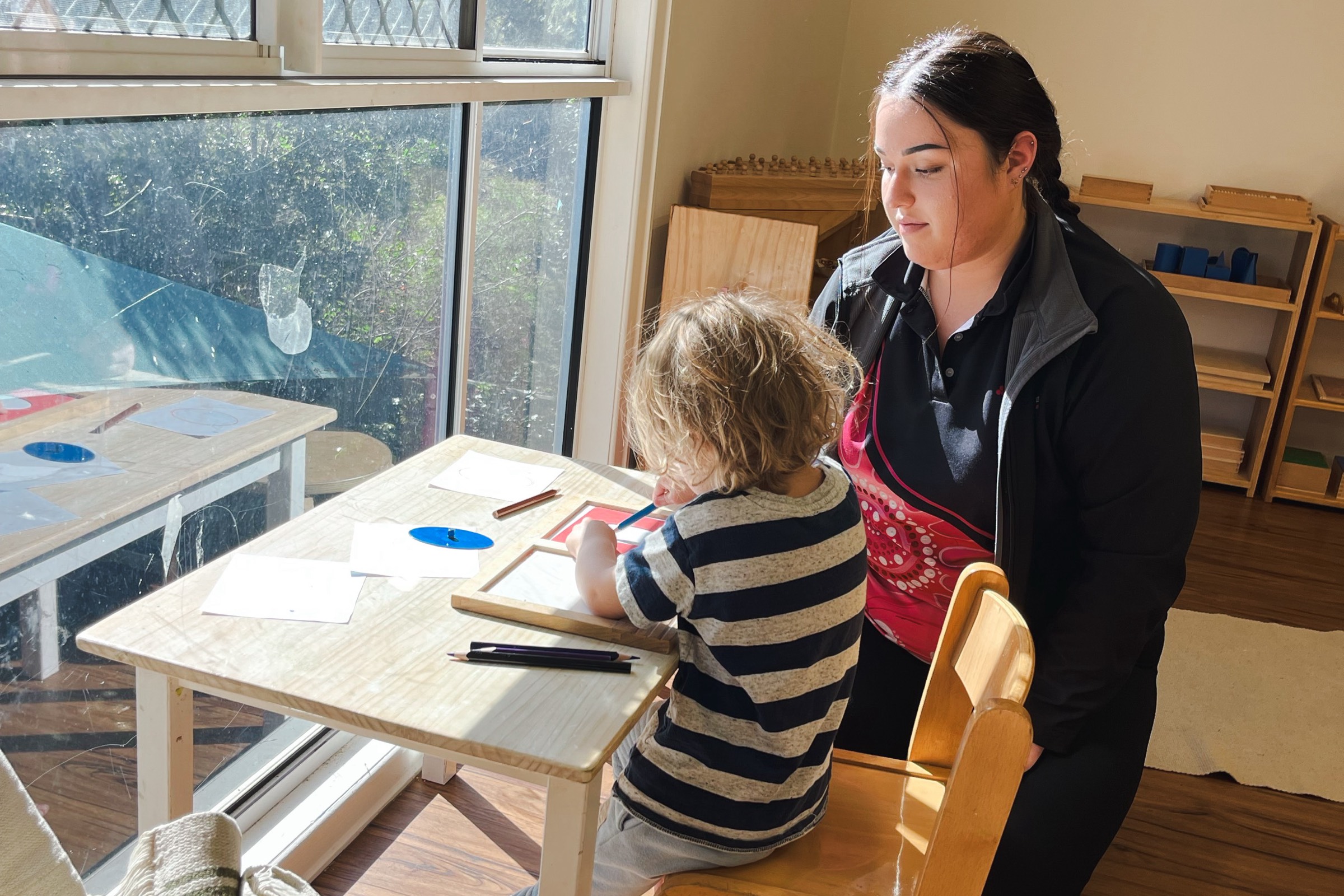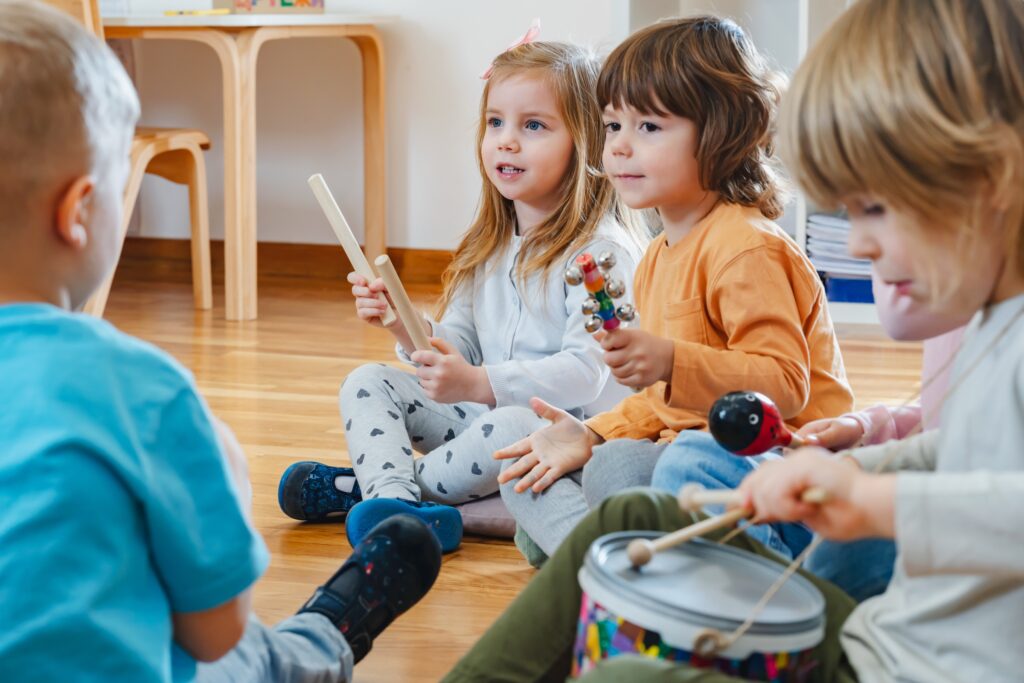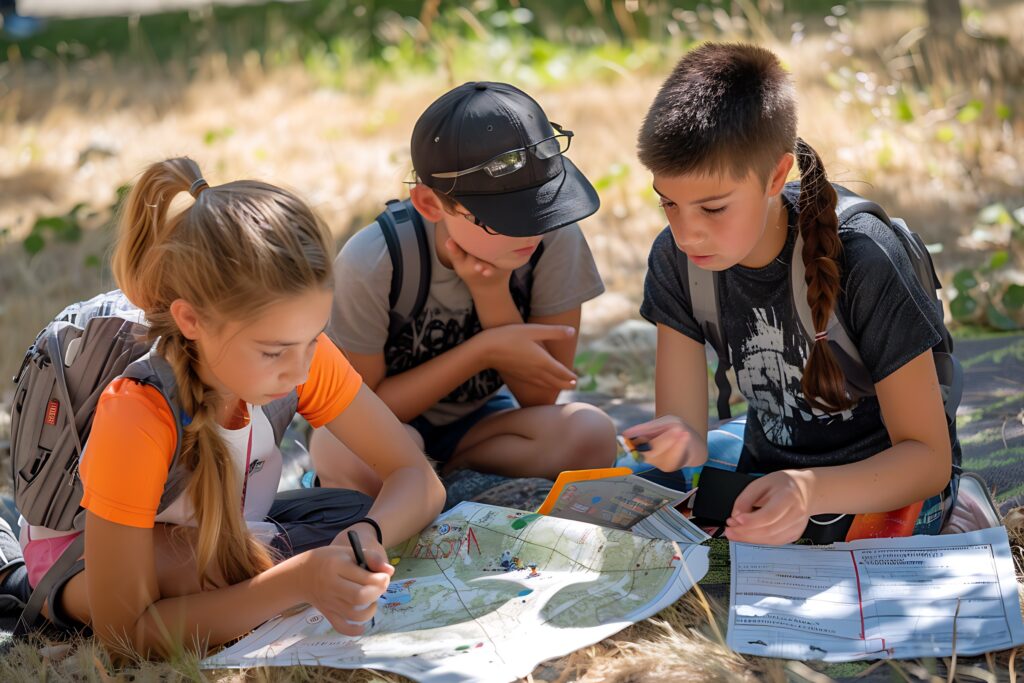How to Choose a Montessori Early Childhood centre for your family


Amidst the advertising clamour and the beautiful photos on websites and social media, the true messages revealing quality can be lost. We all know to avoid people who are skin deep. How do we ensure that in the short time available to make a choice of Early Education setting we can see past the glossy dressing and make an informed decision about enrolment?
There is no real hardship in changing petrol station, grocery store or cleaning service for your family. But if you are dissatisfied with the child centre, change is not so easy. Consistency of relationship is important for children, and even for parents, the relationships formed at the ‘school gate’ create community for the often-challenging journey of parenting. It is important to think carefully about the choices you make to ensure stability in your child’s world. The consequence of frequent relationship changes on children is a likely increase in anxiety and compromise of attachment development, even if parents are stable and wonderful. The choice of education setting is a major undertaking, and one in which parents should seek the best information to make the right choice.
Government
For many parents, the first place to check is ‘Starting Blocks’ – the Australian Government guide for all things early childhood. On this website there is a complete list of registered providers and services. If a centre you are interested in does not appear on this list, it is important to note that it operates outside of the regulatory system.
There is information about the services, including a quality rating. But how helpful is that rating? In the image below, you will see that one of my services is rated as ‘Exceeding’ the quality standards. Whoo hoo! “Awesome,” you think. However, it is early June 2024 as I write this blog and download the rating, and you will note that the date the assessment was made is 8 years ago. In 2016. A lot can happen in 8 months, let alone 8 years. As evidentiary process goes, this evidence is not valid, relevant, timely or reliable. The goalposts are also moving on the processes of Assessment and Rating, meaning that what was measured as exceeding previously, is likely to be rated as ‘meeting’ under the current systems. Unless you are very well informed, you are unlikely to be comparing apples with apples by relying on government assessments.

How about reviews?
Most businesses are victims of keyboard warriors from time to time. Early Childhood is no different. Whilst some negative reviews may highlight genuine problems that a service has had at some time during the past, again it might not be relevant to practice now. We all enjoy a wonderful review for our businesses, but again, it might not be timely or typical practice.
How beautiful is their website?
Some websites contain great information regarding a service. Valuable information regarding the content and delivery of the educational program may be clearly communicated. Policies and procedures might be available for parents to assess if the service meets the family needs, such as operating hours, age groups, food inclusions, etc. Checking the website is certainly a helpful place to start. It isn’t the place to make conclusions, however. Websites are manufactured and created, often off-site by experts in appearances. The reality can only be seen in person.
How impressive is their facility?
The expectations for the appearance of early childhood centres has certainly changed across the last 30 years of our company being in the sector. As we continue to grow and expand, our newer services may reflect these changes. Spacious foyers, special parent relaxation areas, staff lounges in addition to a staff room and pristine carpeted outdoor play areas feature in many today. But who is this to impress? The old services often had minimal ‘adult’ features, with a complete focus on facilities for the children. With increasing documentation and paperwork requirements for educators, sometimes these lack of facilities causes inefficiencies as the older services adjust. Educator facilities can assist in attracting educators to the workplace. Where is the balance? In choosing an early childhood service for your child, look beyond the implied status of the facility. Instead, look at other important factors.
What are the ‘DO’s of choosing a great early childhood centre?
1. Who
The Montessori educator is a highly skilled and specially trained individual. They are often referred to as the “transformed adult”. The regular Early Childhood diploma and degrees do not prepare an adult to be a Montessori educator. For those of us who have moved from regular educational practice into Montessori you will hear of the many epiphanies of the journey, how our practice was demolished and then rebuilt in the process and how we have gained enormous insight into the child. This in itself is worthy of a whole blog. As a parent, it is important to ask questions regarding the training of each educator working in the service. Montessori educators are in very short supply. How is the centre ensuring ongoing workforce with this specific training? Do they have effective training plans for educators? Who is providing their training? Is the training a kind of professional development, in-house and casual, or is it registered and accredited formal courses? How does the service coach and mentor educators who haven’t had training? The number one priority for choosing a Montessori early childhood service is this one. If this isn’t adequate, nothing else will be either. Please note, however, that if this service is the only one in your area that is Montessori in any way, it may well be a better option than a non-Montessori service.
2. Where
Montessorians talk at length about the ‘prepared environment’. If you see the classrooms you should note an uncluttered and calm ambience, a large range of activity options on shelves and items that are particularly suited to small hands and bodies. The environment for babies, sometimes called a nido, will look different to the toddlers (infant community) which is different again from the preschool (Casa). A quick google of Montessori environments should give you a range of images to give you a general idea of what to look for. In the Casa, iconic apparatus such as the pink tower, beads, mats and pouring are likely to be visible. Nature is also important in Montessori, and in particular gardens and sometimes pets. The outdoor space should include natural elements such as sand, dirt, grass (real), rocks, plants, loose parts and space to play. In parts of the world where Montessori is being provided despite poverty, the classrooms might not appear so ‘beautiful’, however a Montessori trained educator will still utilise what is available to create environments that lend themselves to access by children, and a lack of distracting elements.
3. How
A great Montessori service will work towards consistency of relationships by implementing mixed age groups, and aiming for minimal staff changes. Early Childhood is heavily feminised. That is a fact of life. For this reason alone your child’s service is likely to have a level of ‘flux’ in the staff team. Ask how this is handled. Another facet of ‘how’ relates to the position of the child within the classroom. Children are the citizens of their classroom, alongside the adults. Montessori services ensure children are provided with respect, value and autonomy. The trained Montessori educator knows to ‘trust the child’. Whilst the educator may have great ideas for the children, these are only ever offered or suggested – not enforced. Montessorians understand that the child gravitates to those activities that meet their inner drive to learn. In other words, the child is attracted to the next challenge on the blueprint of their developmental journey. The very broad range of apparatus in the prepared environment allows for children to access those types of experiences that they are drawn to. In order to foster self-discipline, the children are provided with opportunities to develop self-discipline. Providing punishments, rewards and enforcing certain activities actually work AGAINST developing self-discipline. For this reason, punishments (or contrived consequences), star charts, praise and other ‘external motivators’ are not used. Instead, children adapt to the responsibility exhibited in the classroom culture, and feel satisfaction internally at their own achievements. The transformed adult allows children to figure things out for themselves without interference, stifles the urge to bribe and manipulate with praise or prizes and facilitates rather than instructs. Oh look – we are back at the importance of the trained Montessori educator!
4. What
The guiding policies, procedures and workplace culture are the context for trained Montessori educators to implement their great programs. Quality leadership, funding, communication and workplace conditions support best practice. Check if the service is a member of professional associations and systems such as Montessori Australia and the “Montessori Registered” quality system. Ask questions regarding policy: What are the ratios? Do the budgets provide adequate resourcing? How is staffing managed? Take in the surrounds: How happy, comfortable and relaxed do the staff team appear? Ask about the staffing contingency practices? Who does recruitment? Who owns and manages the service? What is their reason for offering a Montessori Early Childhood service to the community? What is their grievance policy? What are the service leadership team like? Are they warm and helpful to you?

Whilst we all hope that each child and family has a seamless journey through the Montessori centre of their choice, from time to time things can go wrong. An injury, a poor-quality hire, a child with difficult behaviours in the group, your child having their own challenges, are some examples. Knowing who to talk to in these tough moments, and knowing that they both care, and have capacity to accommodate any necessary changes is important.
At Your Child’s Day, Building Futures Education and Building Futures Montessori, we believe that Montessori, hands down, provides the best environments for our precious little ones to flourish in those important early years and beyond. How can we help?
Helping children thrive is a shared journey. Spread the word and support fellow educators with insights and resources from Your Child’s Day.
Resources, advice, and uplifting stories for educators and families. No spam, ever.



